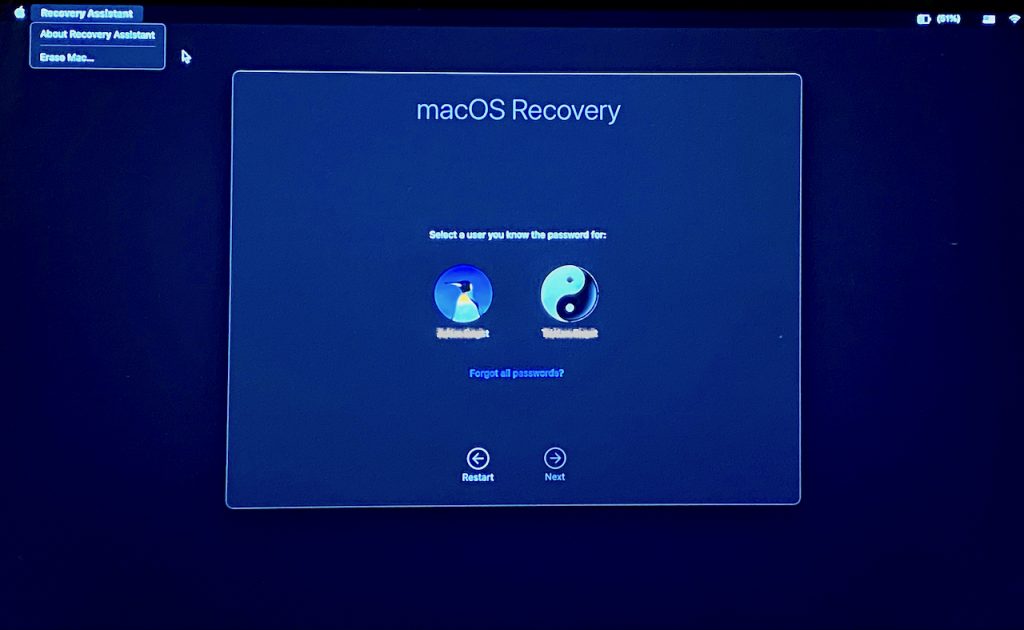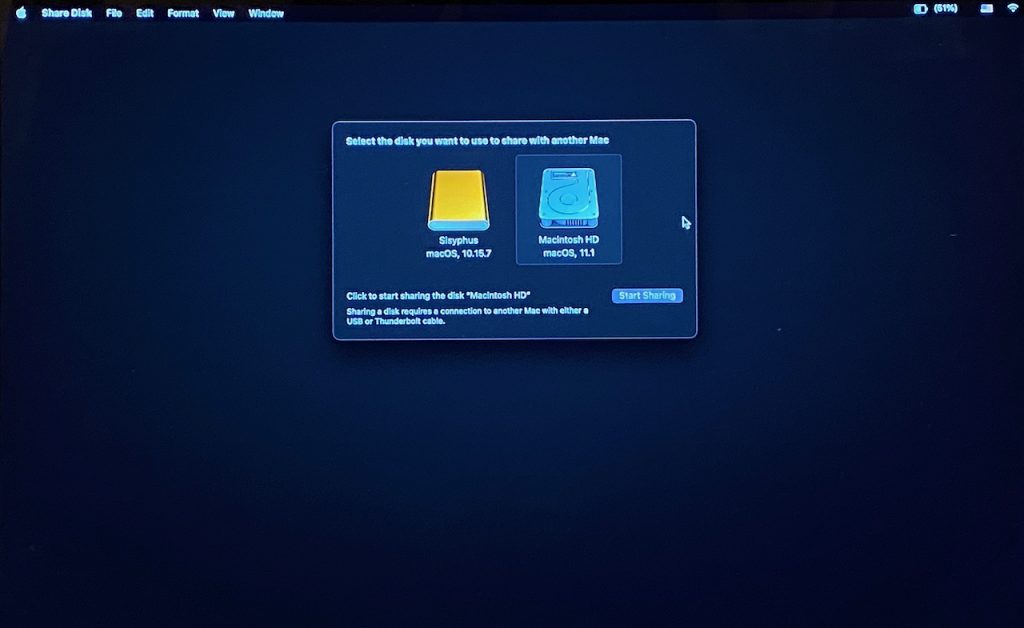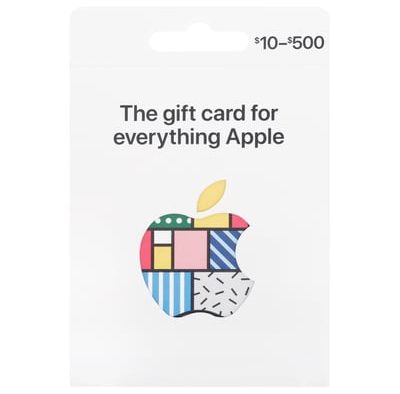Do you use the Photos app on your Mac? Would you like to feel more comfortable using it? If so, consider joining Mirja Heide, a professional photo organizer, for one of her hour-long Wednesday Workout classes this summer. Learn more about Mirja at Refresh Fotos. She is offering 4 Zoom classes on Wednesdays in June, July and August. Each class costs $35. Pre-registration is required. If you’re unable to attend the Zoom classes live, you should still register since class recordings can be watched for up to 10 days after the class.
Read More from “Learn To Use The Photos App On Your Mac”Organize Your Photos With Mirja Heide
Are your digital photos a mess? Do you spend too much time looking for specific images? Are you looking for a way to get rid of duplicates in your photo collection? Then you should consider hiring a photo organizer such as Mirja Heide of RefreshFotos.
Read More from “Organize Your Photos With Mirja Heide”How To View Passwords Saved in Chrome
Do you use Google Chrome on your Mac? Do you let Chrome save some of your web site passwords? Did you know that you can view a list of all saved passwords as well as the passwords themselves? Use these instructions to learn how to view web site login passwords saved by Chrome.
Read More from “How To View Passwords Saved in Chrome”How To View Passwords Saved in Firefox
Do you use Firefox on your Mac? Do you let Firefox save some of your web site passwords? Did you know that you can view a list of all saved passwords as well as the passwords themselves? Use these instructions to learn how to view web site login passwords saved by Firefox.
Read More from “How To View Passwords Saved in Firefox”How To View Passwords Saved in Safari
Do you use Safari on your Mac? Do you let Safari save some of your web site passwords? Did you know that you can view a list of all saved passwords as well as the passwords themselves? Use these instructions to learn how to view web site login passwords saved by Safari in your Mac’s keychain.
Read More from “How To View Passwords Saved in Safari”How To Show Battery Percentage On Your Mac
Have you upgraded your Mac to macOS 11 Big Sur or a newer version of the Mac operating system (macOS)? One of the many new features is that the Menu Bar can be customized more significantly than before. While I appreciate this capability, Apple actually made it harder to add the battery percentage to the menu bar.
In previous version of the Mac operating system (macOS), one could simply click on the battery icon in menu bar and select Show Percent from the menu that appears.
In Big Sur and newer versions of the Mac operating system (macOS), it’s more complicated. Here are instructions that let you re-add the battery’s charge percentage to the Menu Bar.
Read More from “How To Show Battery Percentage On Your Mac”How To Remove A Hard Drive From Time Machine
Do you use Time Machine to backup your Mac? Is Time Machine configured to backup to one or more hard drives? Has one of your backup hard drives died? If so, you want to remove that drive from Time Machine’s configurations. If you don’t remove it then Time Machine will repeatedly remind you that you haven’t backed up to that particular drive in many days.
Here are instructions for removing a hard drive from Time Machine’s configuration. If you’re using macOS 13 Ventura or newer use Section 1.
If you’re using macOS 12 Monterey or older use Section 2.
Section 1 for macOS Ventura and newer
- Click on the Apple menu and select System Settings
- Click on General on the left hand side
- Click on Time Machine on the right hand side.
- Select the drive that you no longer want to use by clicking on its name.
- Click the minus sign icon to remove that drive from the list.
- Click the Forget Destination button to confirm that you no longer want to use this drive.
- Click the red dot in the upper left-hand corner to close the Time Machine window.
Section 2 for macOS Monterey and older
- Click on the Apple Menu, select System Preferences.
- Click on the Time Machine icon.
- Hold down the Control key on your keyboard as you click on the icon for the drive that you want to remove from Time Machine. Use the image above as a guide.
- Select Stop using <hard drive’s name> for Backup
- Click the red dot in the upper left-hand corner to close the Time Machine window.
Here are some other, related Tech Tips.
Learn how to add a second hard drive to your Time Machine configuration.
Learn how to configure Time Machine to use a new hard drive.
Add Your COVID Vaccine Record To Your iPhone Wallet
Would you like to be able to easily locate and display your COVID vaccine record? If you live in Washington state, you can visit this DOH (Department of Health) web page to download your COVID-19 vaccine record and store it in the Wallet app on your iPhone.
When you visit that DOH page, you’ll be asked to enter a few personal details. If the automated system can find your records, it will send you a text message containing a link to view a copy of your vaccine record. You then have three choices:
- Save the record as a jpeg image in the Downloads folder of the Files app
- Save it to the Wallet app on your iPhone
- You could even print the record on paper!
Here’s some guidance on how to save it to the Wallet app. While viewing one’s vaccine record at the DOH website, tap on the button named “Works with Apple Health”. Then click the button named “Add to Wallet & Health”.

Once you’ve put your vaccine record in the Wallet you can easily access it on your iPhone. When your iPhone is asleep you can double press the button on the right side of your iPhone which opens the Wallet, then tap on your red Vaccination Card.
Trade-in Your Apple Devices For An Apple Gift Card
Do you have some older Apple products, like an iPad, iPhone, Mac or Apple Watch that you no longer use? If so, you can send them to Apple and get either a credit towards a future purchase or an Apple Gift Card. When I learned this recently, it was news to me. For years, Apple has allowed you to trade-in your older Mac, or older iPad when you purchase a new Mac, iPhone or iPad, but I wasn’t aware that they had expanded this program.
Read More from “Trade-in Your Apple Devices For An Apple Gift Card”Upgrade Backblaze 7 to BackBlaze 8
Do you use Backblaze to backup your Mac? It’s a great way to create an off-site backup of your Mac’s data.
In September 2021, Backblaze version 8 was released. Backblaze tends to automatically upgrade itself, but for reasons I haven’t been able to identify, Backblaze version 7 doesn’t seem to always upgrade itself to version 8. Here are instructions on how to manually upgrade your Mac to Backblaze version 8. Version 8 requires OS X 10.9 Mavericks or higher, including macOS 11 Big Sur.
Read More from “Upgrade Backblaze 7 to BackBlaze 8”Are You Prepared To Have Your iPad or iPhone Stolen?
A client recently had his iPad stolen, but he was prepared because he had the Find My feature enabled and he was backing up his iPad to iCloud. Do you have these features enabled? These features are useful whether you get your iPad back or not. If you don’t get your iPad back then the Find My feature can be used to lock and/or erase your iPad, and the iCloud backup can be used to restore your apps, data and accounts onto a new iPad. If you do get your iPad back the Find My feature might have helped you locate it and the iCloud Backup feature can be used to restore your apps, data and accounts if you erased your iPad as a precaution.
Read More from “Are You Prepared To Have Your iPad or iPhone Stolen?”How To Identify USB Cable Connectors
Are you confused by the assorted USB cables that you’ve accumulated over the years? Do you need to be able to name or identify the type of connector you have on one end of your USB cable? The image above shows most of the USB connectors that have been used since USB debuted around 1998.
Read More from “How To Identify USB Cable Connectors”Enabling FileVault On Your Mac
One of the best ways to protect the files on your Mac is to enable FileVault. It is a feature of the Mac operating system (macOS) which performs on-the-fly encryption and decryption of all of your personal files when you save them and open them again. The beauty of FileVault is that this encryption and decryption occurs behind the scenes. All you have to do is enable it. Your interaction with your Mac won’t change. You’ll have the added protection without having to do anything differently. In the event that your Mac is stolen, a thief won’t be able to access your files. FileVault provides much more protection than merely using a password on your user account. Read More from “Enabling FileVault On Your Mac”
Determining Your Hard Drive’s Fullness
Since a very full hard drive can produce unwanted and erratic behaviors on a Mac, I typically recommend keeping at least 10% of your hard drive’s capacity available. In other words, you want your internal storage to be less than 90% full.
Determining the fullness of your Mac’s hard drive is not as easy as it used to be. For many years, one could click on the Apple menu, select About This Mac, click the Storage button and see a summary of their Mac’s hard drive fullness. This summary no longer provides the full picture since it doesn’t mention purgeable space. Instead, it’s better to use the Get Info command to determine the fullness of one’s hard drive.
Meaning Of Weak Security Warning On iPhone Or iPad
Apple added a new alert in iOS 14. Your iPhone or iPad will alert you if your wireless (Wi-Fi) network is using weak security. To elaborate, this alert means that your Wi-Fi router is using an older encryption technology to protect the information flowing to and from all of the devices connected to your Wi-Fi network. The warning looks like the one shown below.
More specifically, your iPhone or iPad will display this alert if your Wi-Fi router is using any of the following outdated encryption technologies: WEP, WPA, or WPA2 (TKIP). Currently, only WPA2 (AES) and WPA3 are considered secure. Read More from “Meaning Of Weak Security Warning On iPhone Or iPad”
Recycling Appliances In Seattle
Do you live in the greater Seattle area and have any large or small appliances that you’d like to recycle? Check out Friendly Earth. Previously, I’ve written a half dozen or more articles about how to recycle various items in the Seattle area. To the best of my knowledge, none of the groups that I’ve mentioned recycle large and small appliances. I recently had a need for this. Fortunately, a client pointed me towards Friendly Earth. Here’s a full list of what they do and don’t accept. I was very interested to learn that they recycle all of the following:
Appliances (Large & Small)
Air-conditioners
Barbeques/Grills
Calculators and Adding Machines
Dishwashers/Trash Compactors
Dryers
Generators
Lawnmowers
Microwaves
Speakers
Stereos
Televisions
Washing Machines
AirPort Express Replacement Options
AirPort Time Capsule Replacement Options
M1-Based Macs Have New Startup Modes: Here’s What You Need to Know
For many years, Macs have relied on sets of keys held at startup to enable specific modes. Most notably, pressing Option displays the Startup Manager and lets you pick a boot drive, Command-R starts up from macOS Recovery, Command-Option-P-R resets the NVRAM, Shift starts up in Safe mode, D opens Apple Diagnostics to check the hardware, and T starts up in Target Disk Mode. Needless to say, obscure key combinations aren’t the friendliest way to help someone who may already be stressed out about their Mac not working, so Apple improved things for the new M1-based Macs.
The most important part is that you no longer have to press a key combination during startup. Instead, press and hold the power button until the screen shows “Loading startup options…” and displays the Startup Manager.
Unfortunately, Apple is still a little fast and loose with terms, so we’ve tried to list all of the ones you might see.
Startup Manager / Startup Disk
If you have multiple boot drives and wish to switch among them, you’ll want to use Startup Manager. Immediately after you see “Loading startup options…,” the Mac displays the new Startup Manager, which shows icons for all the bootable drives, along with buttons for Options, Shut Down, and Restart. To boot from a particular drive, select it and click Continue under it.

If you work your way into macOS Recovery but then want to back out in order to select a startup drive, look in the Apple menu for a Startup Disk command, which provides similar functionality with a slightly different look.

Startup Manager (but not Startup Disk) also lets you start up in Safe mode and set a drive as the default to use for booting. First, select a drive. Then, for Safe mode, press the Shift key and click the Continue in Safe Mode button below it. To set a selected drive as the default, press the Control or Option key and click the Always Use button underneath it.
Note that M1-based Macs can’t boot from just any external drive. We’re all still learning about the new platform, but it seems that you need a Thunderbolt 3 SSD that has been freshly formatted with APFS and set up with a new installation of macOS 11.1 Big Sur. See Howard Oakley’s writeup for details.
macOS Recovery / Recovery
When you need to reinstall macOS or restore from a Time Machine backup, head to macOS Recovery. From the Startup Manager screen, select Options and click Continue underneath it. After you choose a language, an initial macOS Recovery screen appears. Note that you have access to the Apple menu, which lets you choose Startup Disk, Restart, or Shut Down, and to the Recovery Assistant menu, which includes a potentially useful Erase Mac command.

macOS Recovery presents you with a list of users. Select one for which you know the login password, click Next, and enter the password when prompted. Now, in the Recovery app, you can restore from Time Machine, reinstall Big Sur, launch Safari to browse the Web and get online help from Apple, and open Disk Utility to manage drives.

The Recovery app has a full set of menus, and notice Utilities in particular. It lets you launch the Startup Security Utility, to reduce the macOS security level, or Terminal, if you want to run command-line tools before startup. (The old macOS single-user mode accessible by holding down S at startup has disappeared.) To return to the Recovery app from any other app, quit the current app. Finally, note that the Recovery app’s Window menu has an option for Recovery Log. As is often the case with logs, it may be inscrutable to all but high-level support experts.

Oddly, once you’re in macOS Recovery, there’s no way to return to the Startup Manager.
Target Disk Mode / Share Disk
If you ever want to access one Mac’s drives from another, you can connect the two Macs via a USB or Thunderbolt cable and use Target Disk Mode. On M1-based Macs, you initiate Target Disk Mode using a command in the Recovery app’s Utilities menu: Share Disk.
Choose Utilities > Share Disk to start sharing one of the M1-based Mac’s drives via Target Disk Mode. Select the drive and click Start Sharing. When you’re done using it, click Stop Sharing before disconnecting the cable.

Apple Diagnostics / Diagnostics Loader
If you’re worried that your M1-based Mac is suffering from a hardware failure, running Apple Diagnostics may shed some light on the problem. Oddly, getting to Apple Diagnostics still requires a hidden keystroke.
Once you’re in the Startup Manager screen, press and hold Command-D to reboot the Mac into the Diagnostics Loader app. You can choose to run the diagnostics offline or to share the information with Apple.

After you pick one, the diagnostics run right away and report back when they’re done. If you have an M1-based MacBook Air or MacBook Pro, make sure to plug it in first, or you’ll get an error telling you that the power adapter couldn’t be found.

The troubleshooting approaches that no longer seem to be available in any way are to reset the NVRAM (Non-Volatile RAM) or the SMC (System Management Controller). Apparently, the NVRAM tests itself at startup and resets automatically if necessary. M1-based Macs reportedly don’t have an SMC in the same way as Intel-based Macs, so there’s no option to reset it.
(Featured image by Apple)












